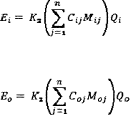§ 60.5413 What are the performance testing procedures for control devices used to demonstrate compliance at my storage vessel or centrifugal compressor affected facility?
This section applies to the performance testing of control devices used to demonstrate compliance with the emissions standards for your centrifugal compressor affected facility. You must demonstrate that a control device achieves the performance requirements of § 60.5412(a) using the performance test methods and procedures specified in this section. For condensers, you may use a design analysis as specified in paragraph (c) of this section in lieu of complying with paragraph (b) of this section. In addition, this section contains the requirements for enclosed combustion device performance tests conducted by the manufacturer applicable to both storage vessel and centrifugal compressor affected facilities.
(a) Performance test exemptions. You are exempt from the requirements to conduct performance tests and design analyses if you use any of the control devices described in paragraphs (a)(1) through (7) of this section.
(1) A flare that is designed and operated in accordance with § 60.18(b). You must conduct the compliance determination using Method 22 at 40 CFR part 60, appendix A-7, to determine visible emissions.
(2) A boiler or process heater with a design heat input capacity of 44 megawatts or greater.
(3) A boiler or process heater into which the vent stream is introduced with the primary fuel or is used as the primary fuel.
(4) A boiler or process heater burning hazardous waste for which you have either been issued a final permit under 40 CFR part 270 and comply with the requirements of 40 CFR part 266, subpart H; or you have certified compliance with the interim status requirements of 40 CFR part 266, subpart H.
(5) A hazardous waste incinerator for which you have been issued a final permit under 40 CFR part 270 and comply with the requirements of 40 CFR part 264, subpart O; or you have certified compliance with the interim status requirements of 40 CFR part 265, subpart O.
(6) A performance test is waived in accordance with § 60.8(b).
(7) A control device whose model can be demonstrated to meet the performance requirements of § 60.5412(a) through a performance test conducted by the manufacturer, as specified in paragraph (d) of this section.
(b) Test methods and procedures. You must use the test methods and procedures specified in paragraphs (b)(1) through (5) of this section, as applicable, for each performance test conducted to demonstrate that a control device meets the requirements of § 60.5412(a). You must conduct the initial and periodic performance tests according to the schedule specified in paragraph (b)(5) of this section.
(1) You must use Method 1 or 1A at 40 CFR part 60, appendix A-1, as appropriate, to select the sampling sites specified in paragraphs (b)(1)(i) and (ii) of this section. Any references to particulate mentioned in Methods 1 and 1A do not apply to this section.
(i) Sampling sites must be located at the inlet of the first control device, and at the outlet of the final control device, to determine compliance with the control device percent reduction requirement specified in § 60.5412(a)(1)(i) or (a)(2).
(ii) The sampling site must be located at the outlet of the combustion device to determine compliance with the enclosed combustion device total TOC concentration limit specified in § 60.5412(a)(1)(ii).
(2) You must determine the gas volumetric flowrate using Method 2, 2A, 2C, or 2D at 40 CFR part 60, appendix A-2, as appropriate.
(3) To determine compliance with the control device percent reduction performance requirement in § 60.5412(a)(1)(i) or (a)(2), you must use Method 25A at 40 CFR part 60, appendix A-7. You must use the procedures in paragraphs (b)(3)(i) through (iv) of this section to calculate percent reduction efficiency.
(i) For each run, you must take either an integrated sample or a minimum of four grab samples per hour. If grab sampling is used, then the samples must be taken at approximately equal intervals in time, such as 15-minute intervals during the run.
(ii) You must compute the mass rate of TOC (minus methane and ethane) using the equations and procedures specified in paragraphs (b)(3)(ii)(A) and (B) of this section.
(A) You must use the following equations:

Where:
(B) When calculating the TOC mass rate, you must sum all organic compounds (minus methane and ethane) measured by Method 25A at 40 CFR part 60, appendix A-7 using the equations in paragraph (b)(3)(ii)(A) of this section.
(iii) You must calculate the percent reduction in TOC (minus methane and ethane) as follows:

Where: